Abstract
Relative responding in initial links of concurrent-chain schedules showed that pigeons preferred free to forced choices and informative to uninformative stimuli. Variable-interval initial links on two lower keys (white) of a six-key chamber produced terminal links on either two upper-left keys (blue and/or amber) or two upper-right keys (green and/or red). Terminal.links in which pecks on either of two lit keys produced fixed-interval reinforcement (free choice) were preferred to links with only one lit fixed-interval key available (forced choice). Terminal links with different key colors correlated with concurrent fixed-interval reinforcement and extinction (informative stimuli) were preferred to links with these schedules operating on same-color keys (uninformative stimuli). Scheduling extinction for one of the two free-choice keys assessed preference for two lit keys over one lit key, but confounded number with whether stimuli were informative. Fixed-interval reinforcement for both keys in each terminal link, but with different-color keys in one link and same-color keys in the other, showed that preference for informative stimuli did not depend on stimulus variety. Preferences were independent of relative responses per reinforcement and other properties of terminal-link performance.
Full text
PDF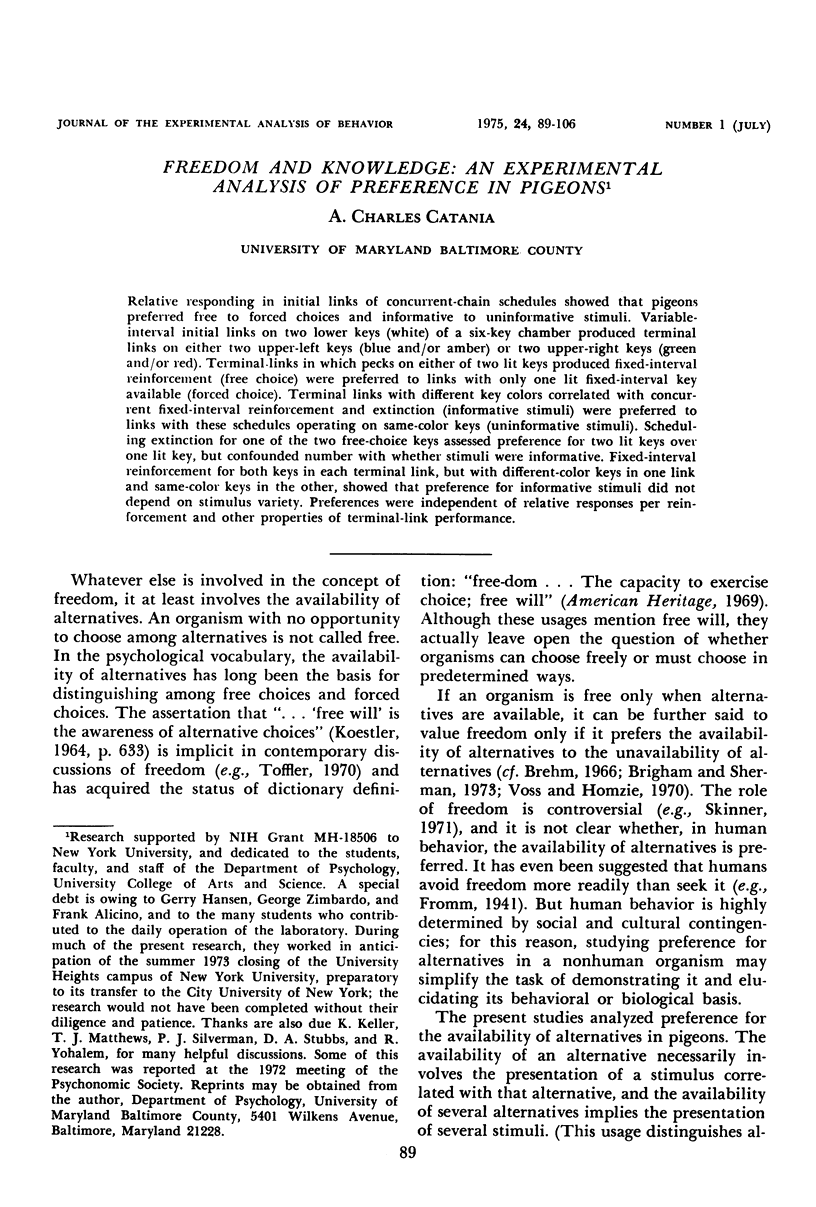
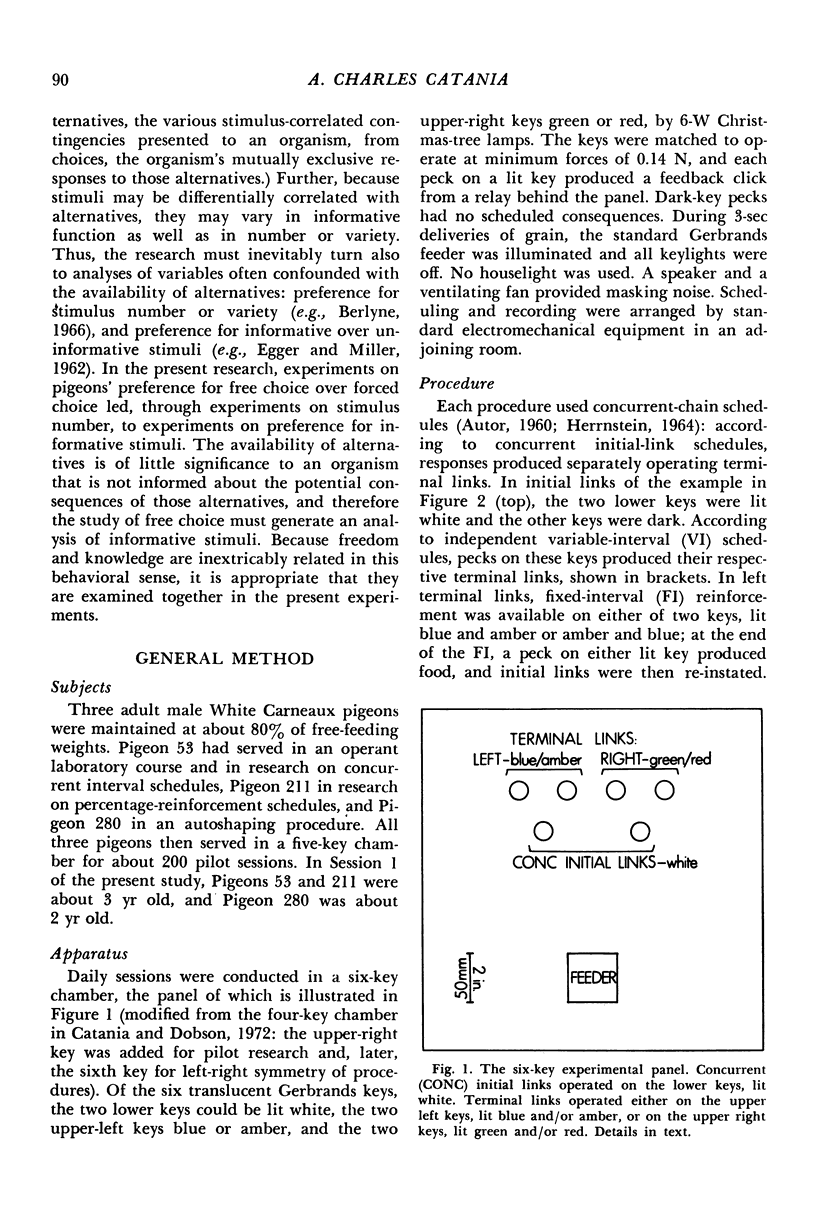
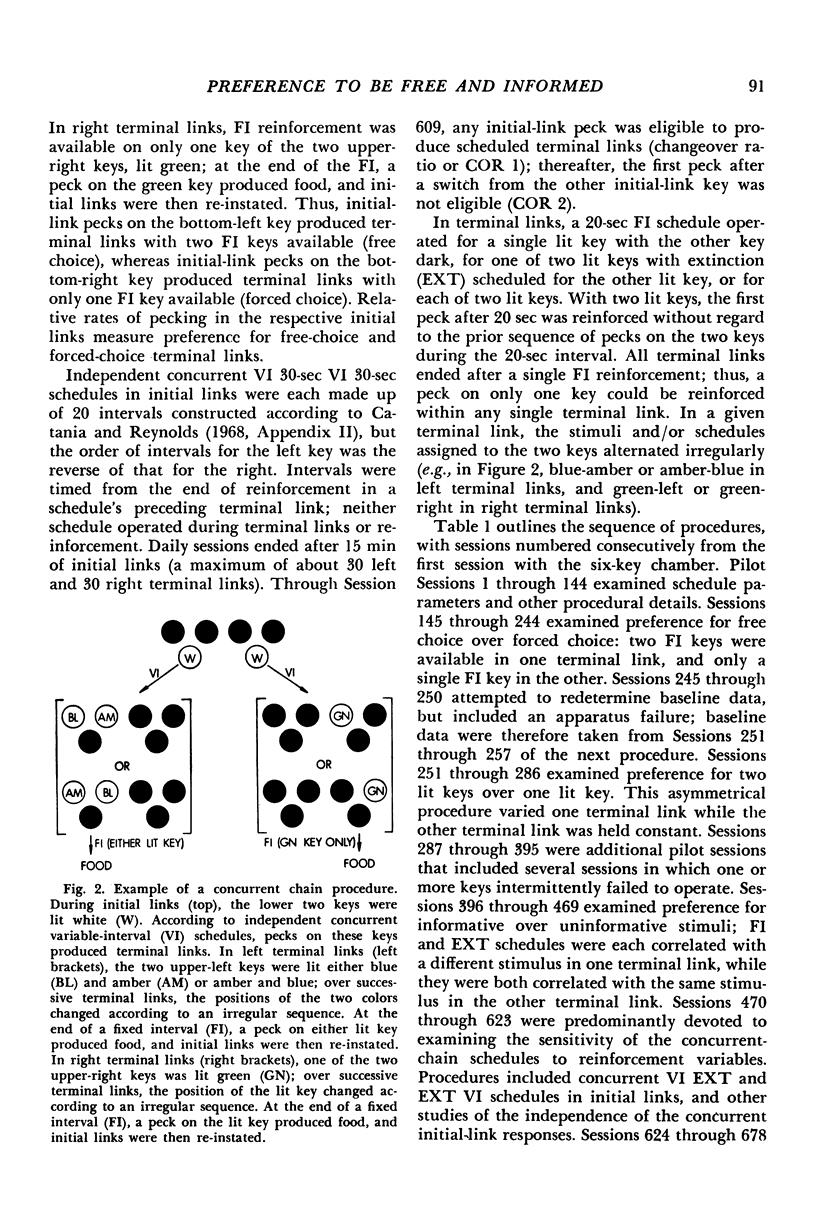
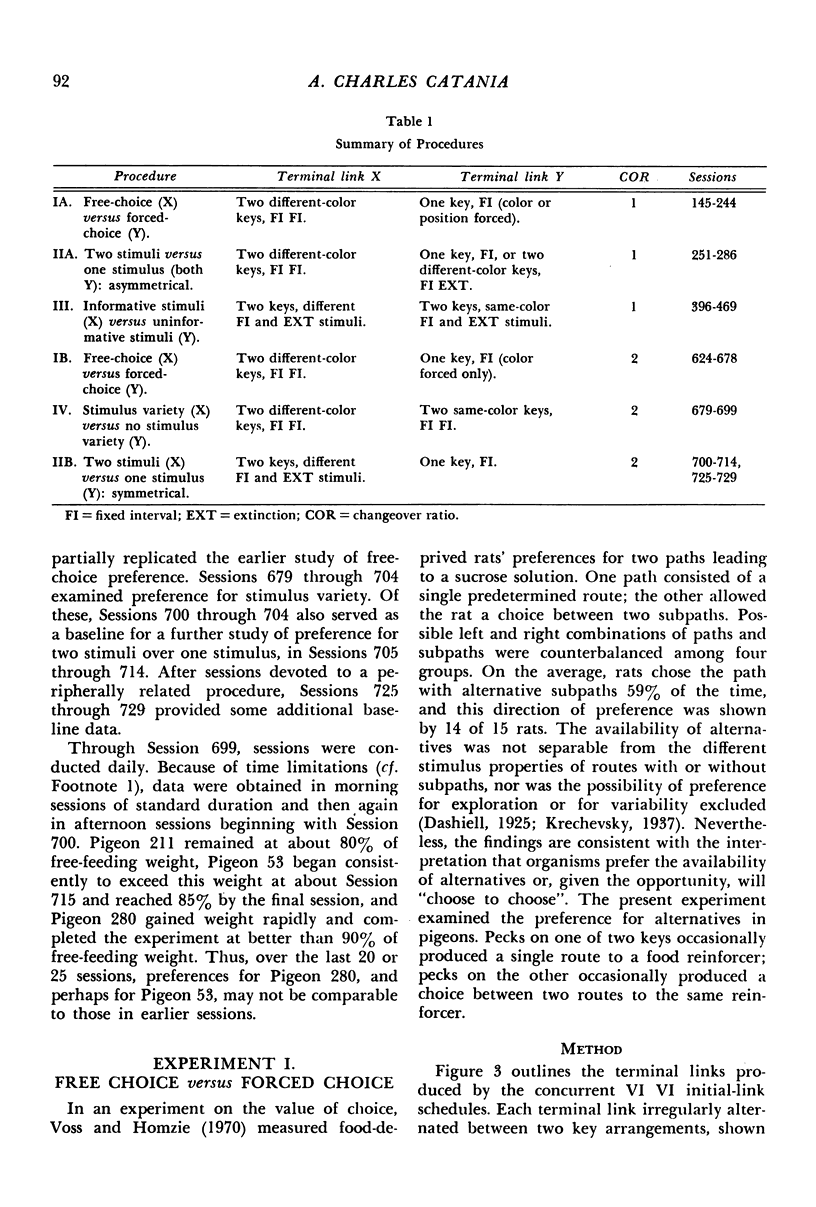
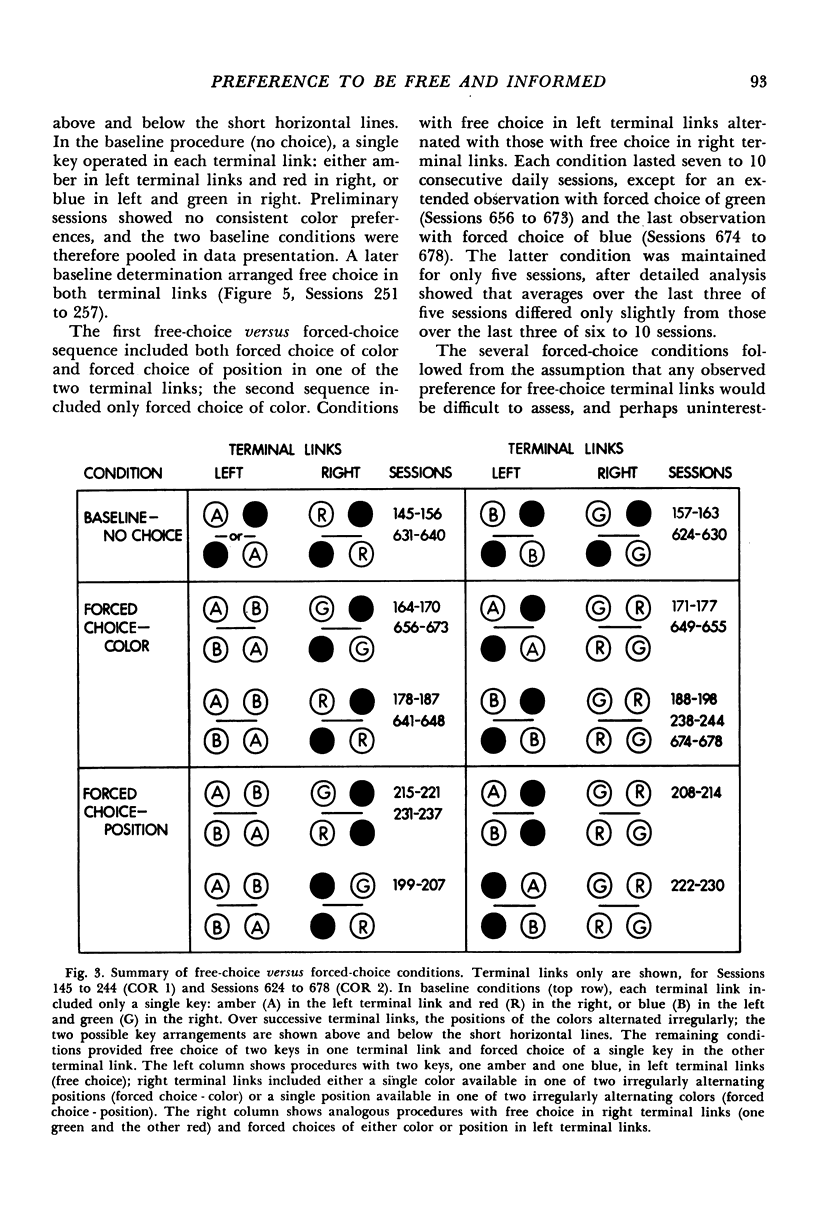
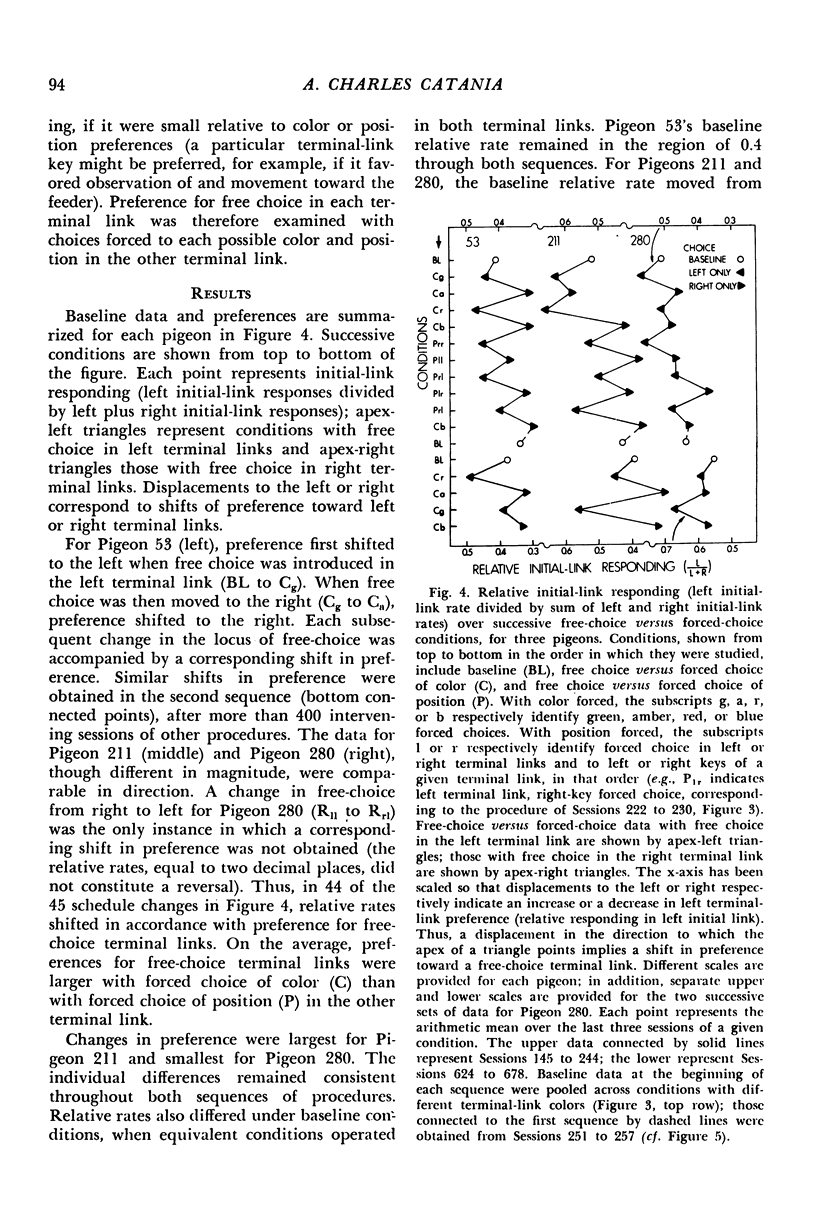
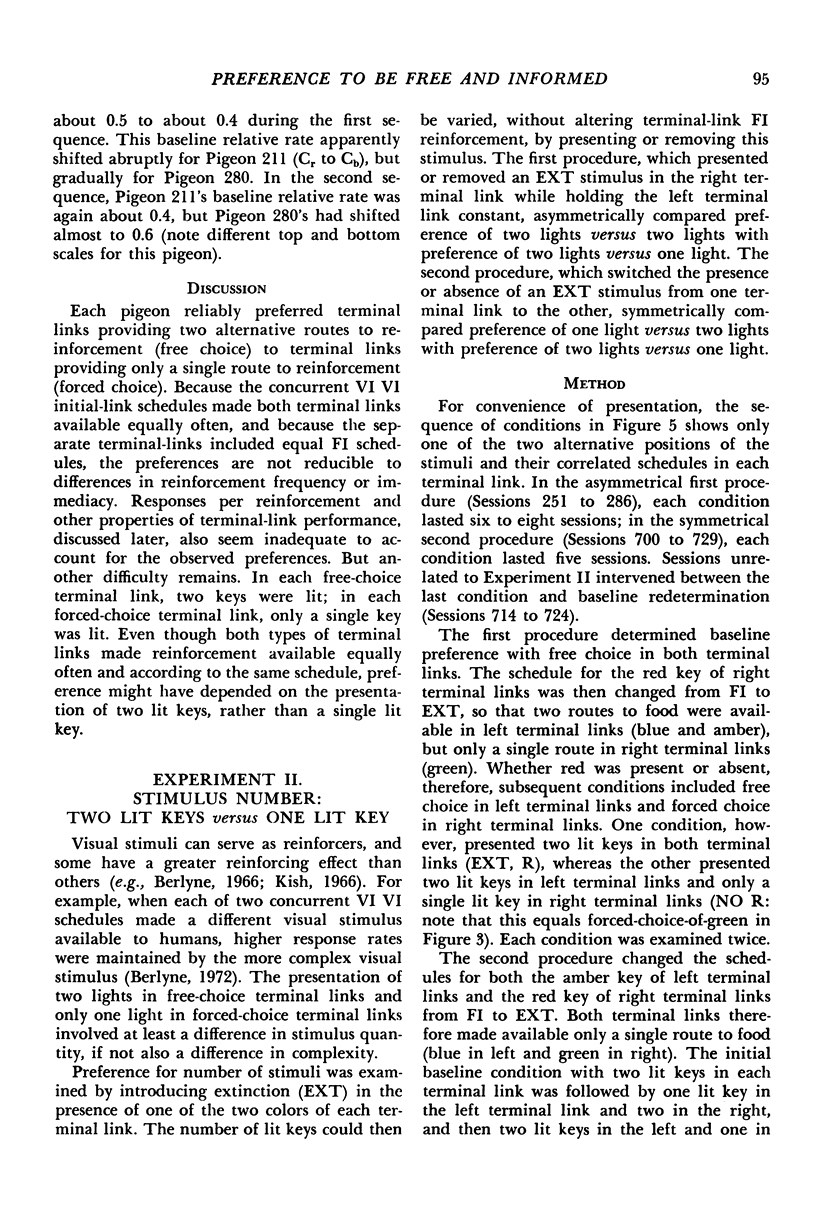
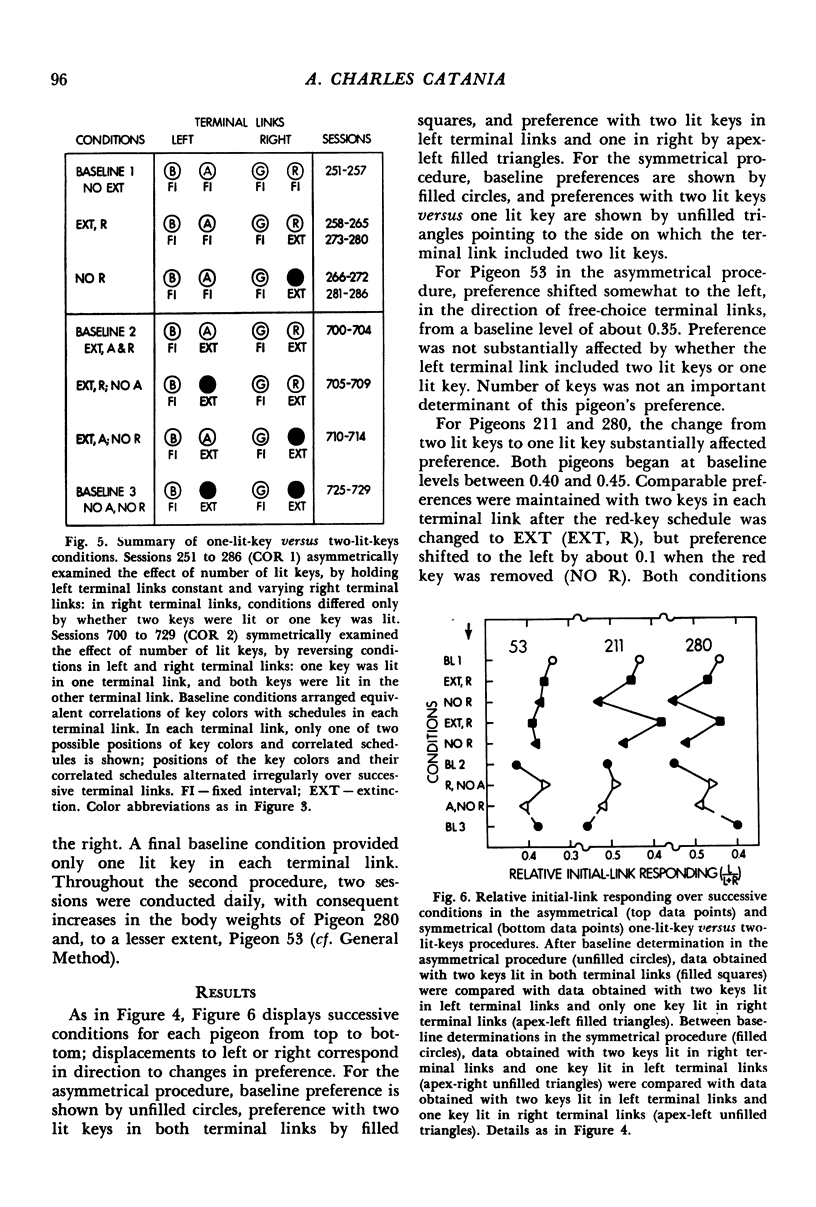
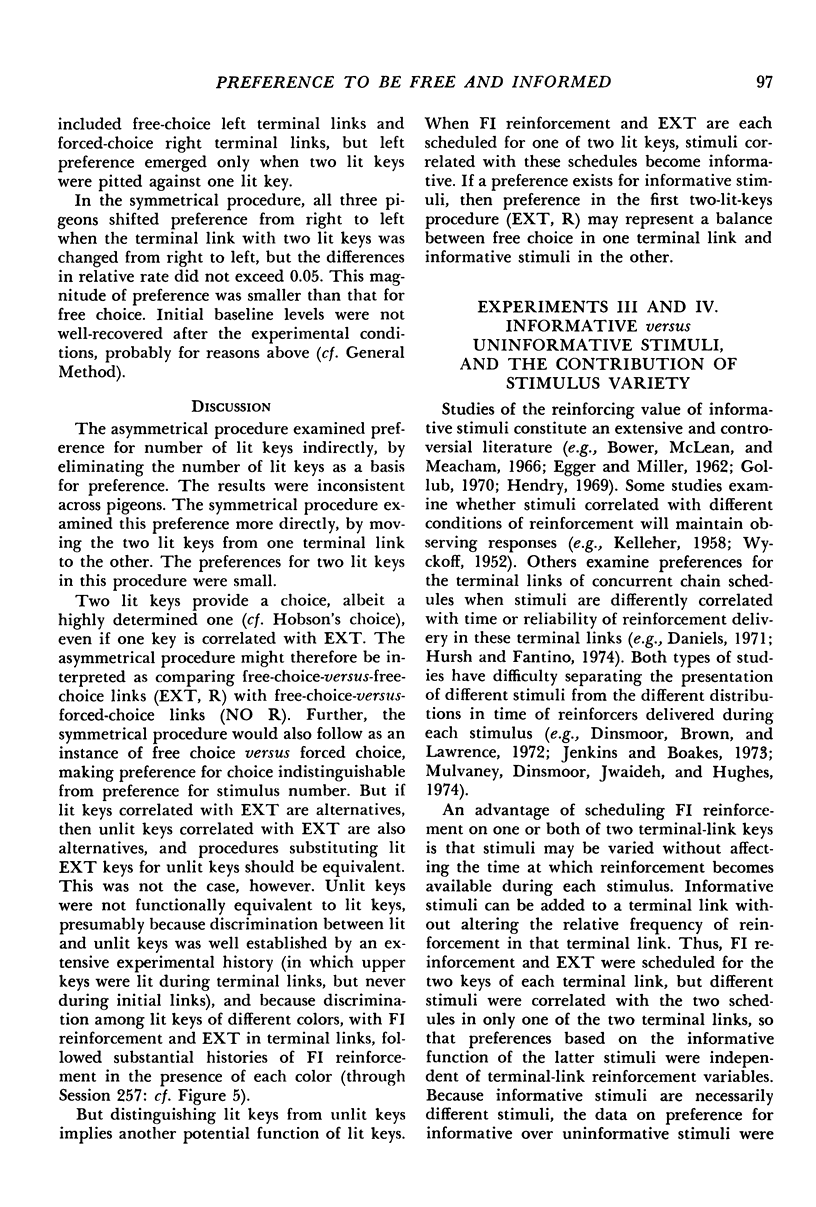
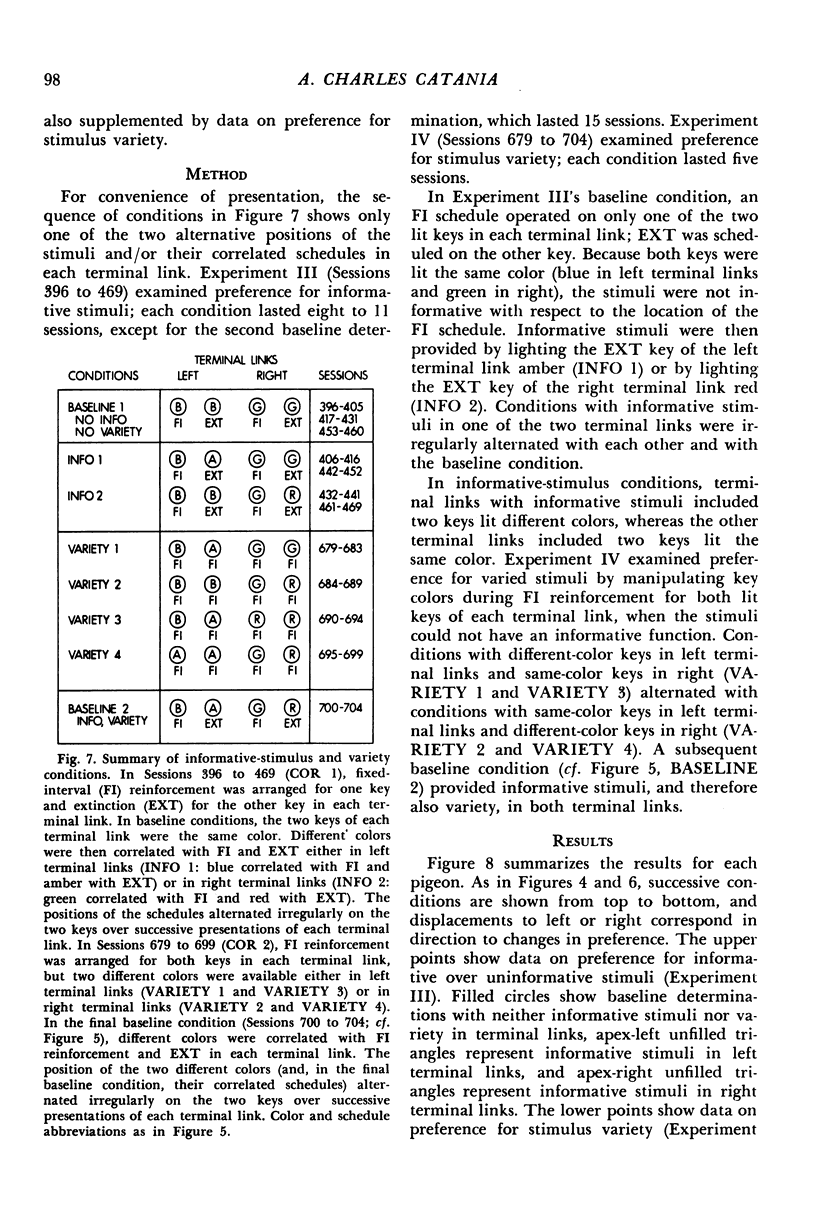
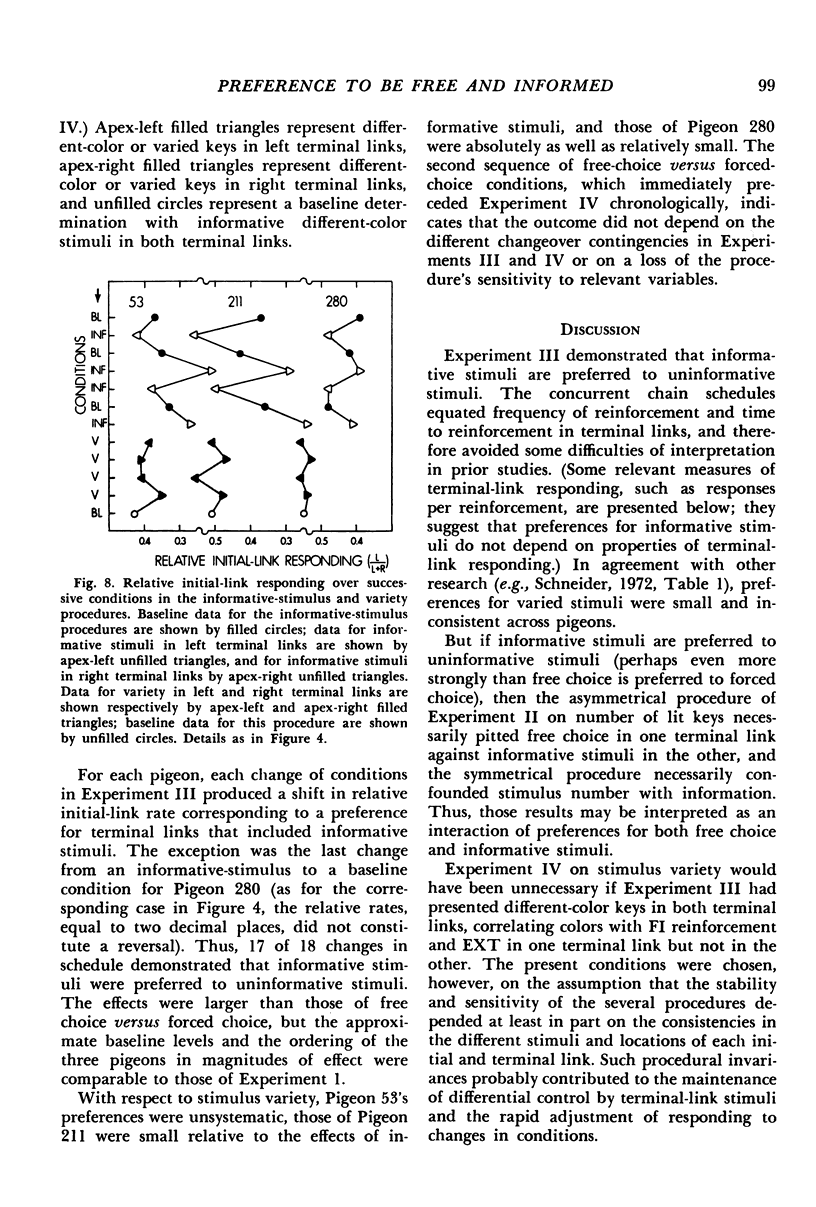
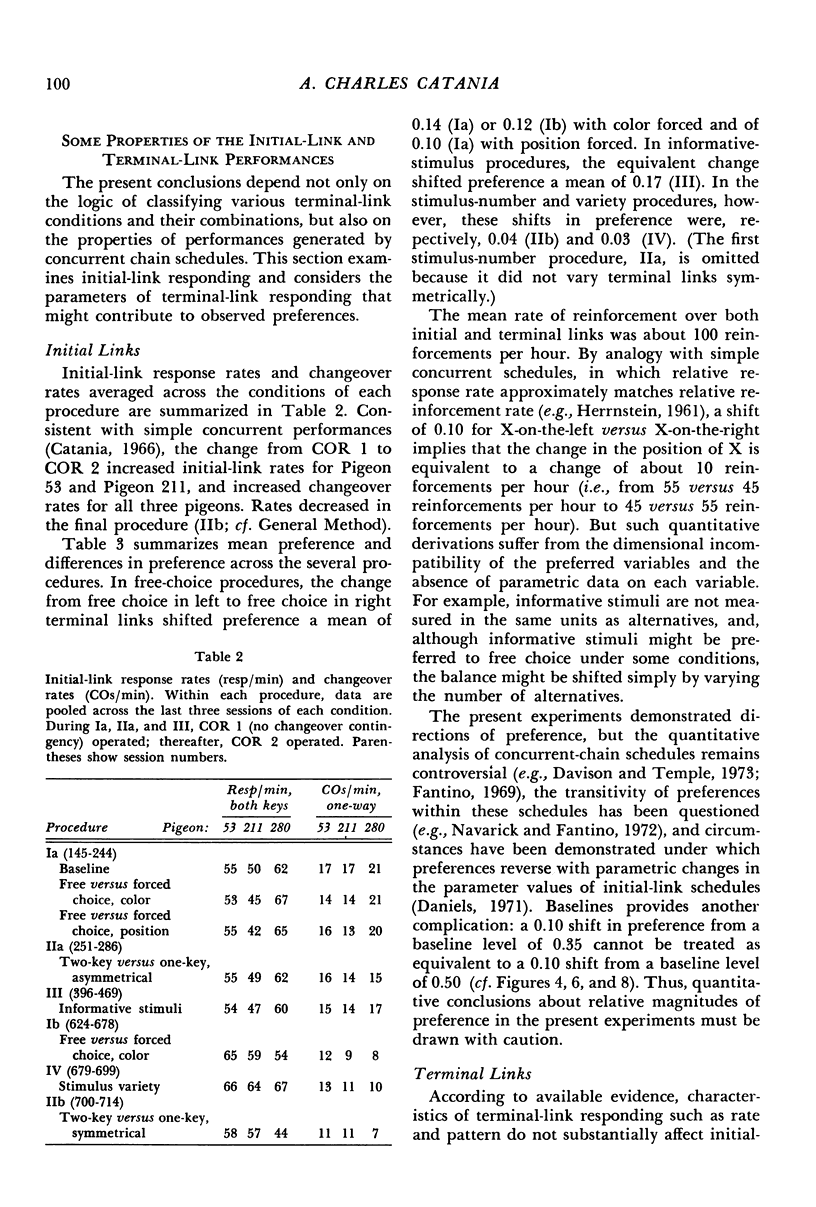
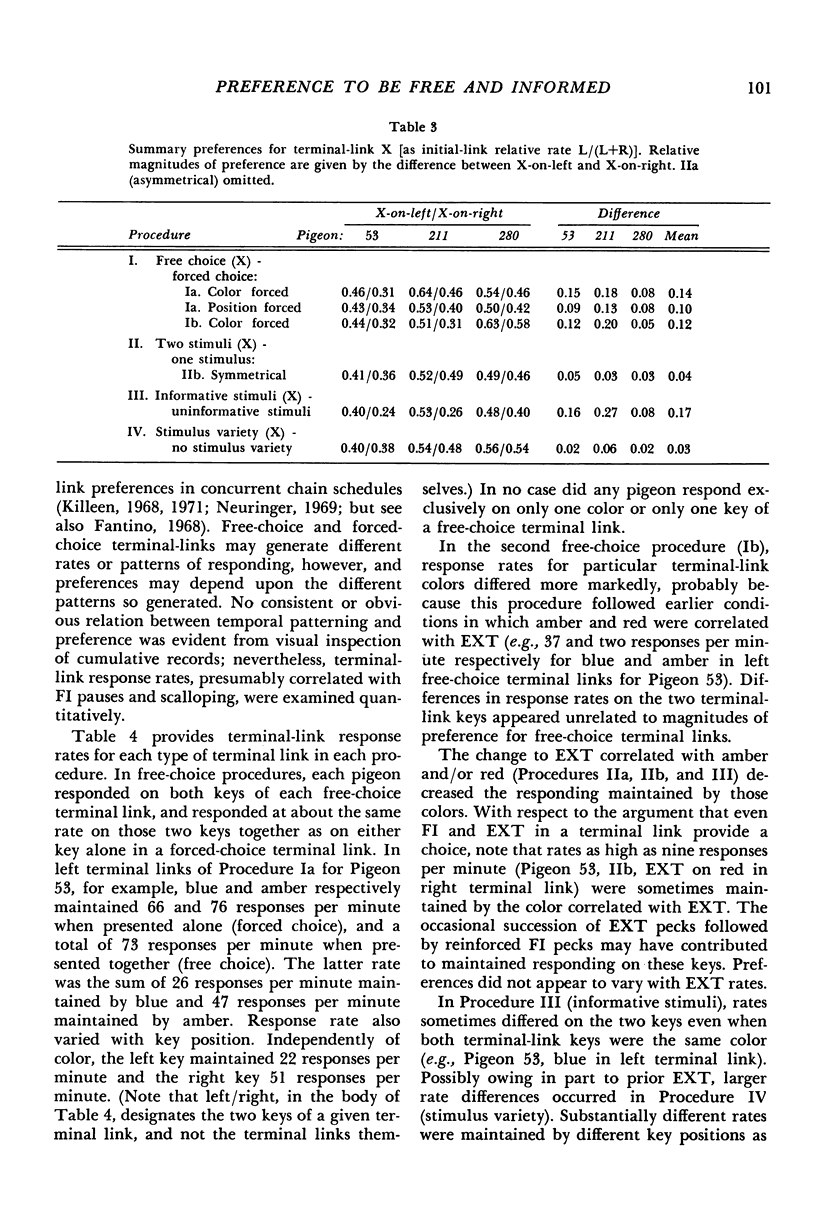
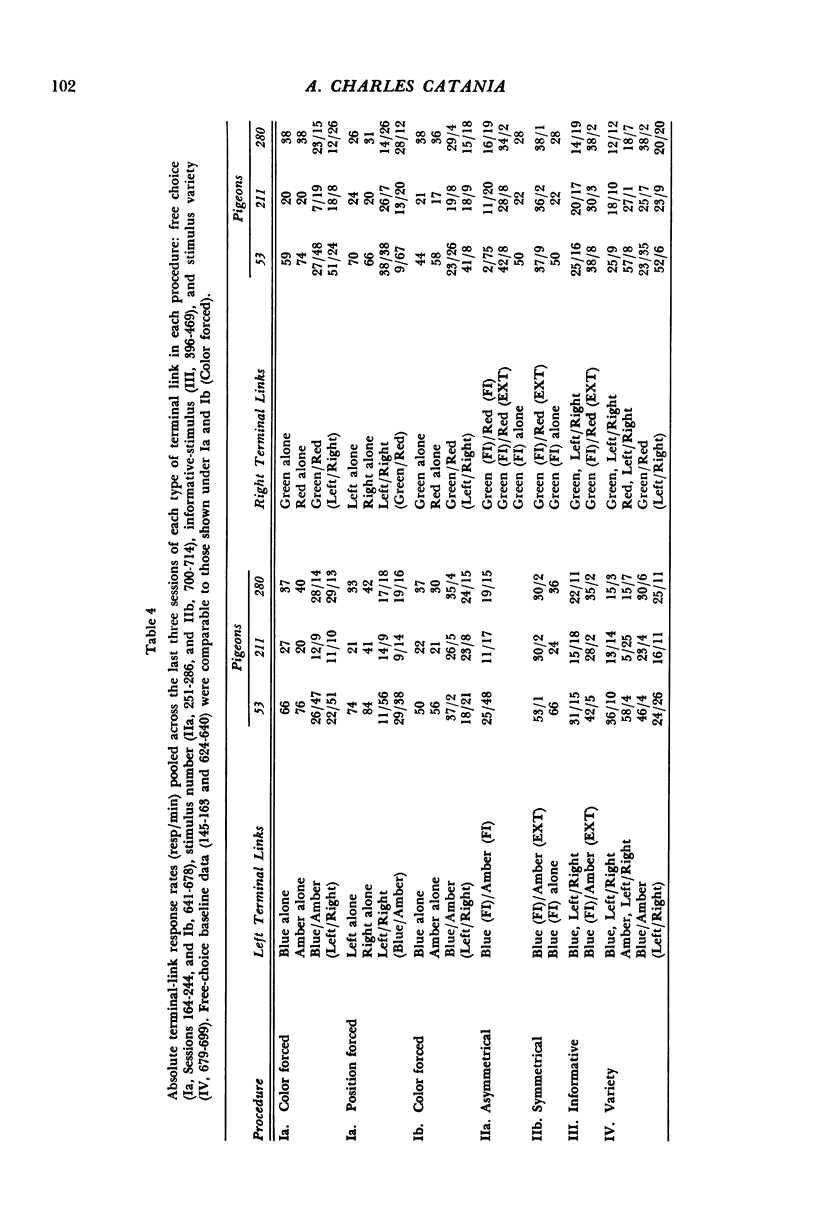
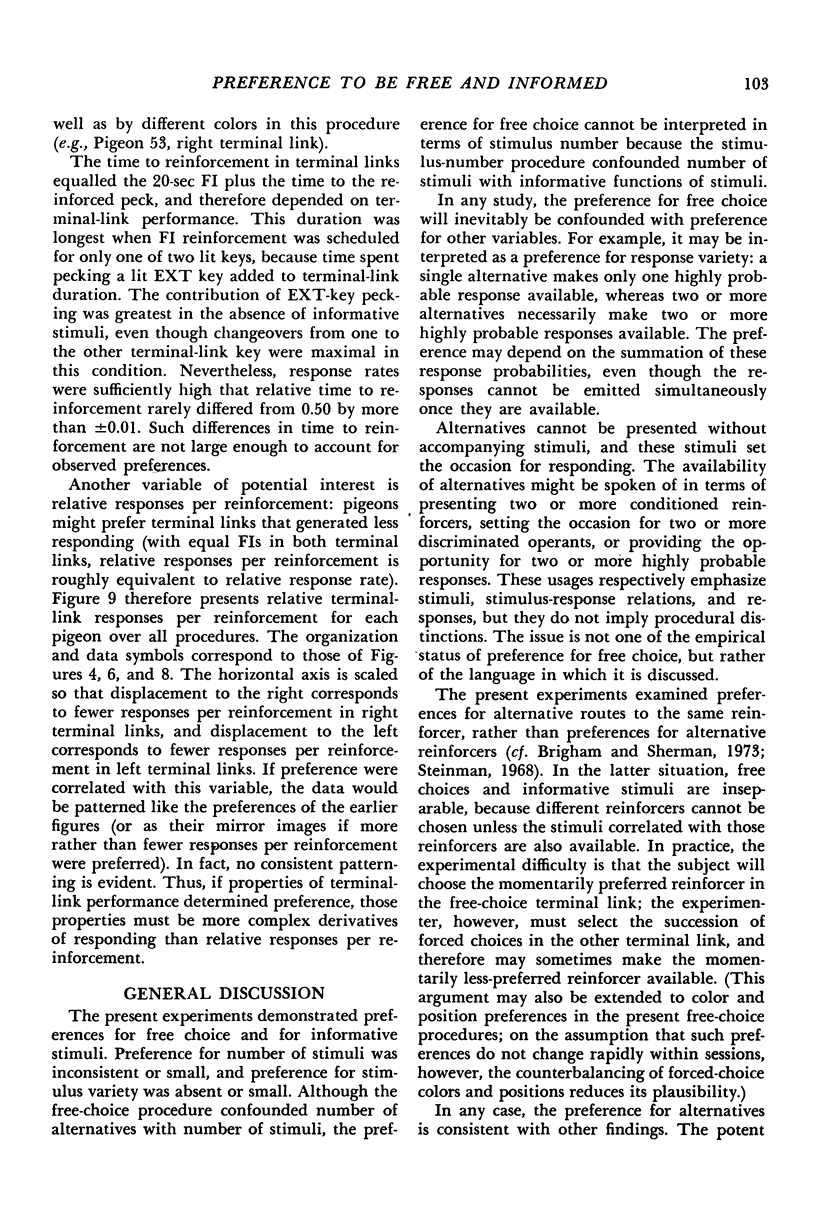
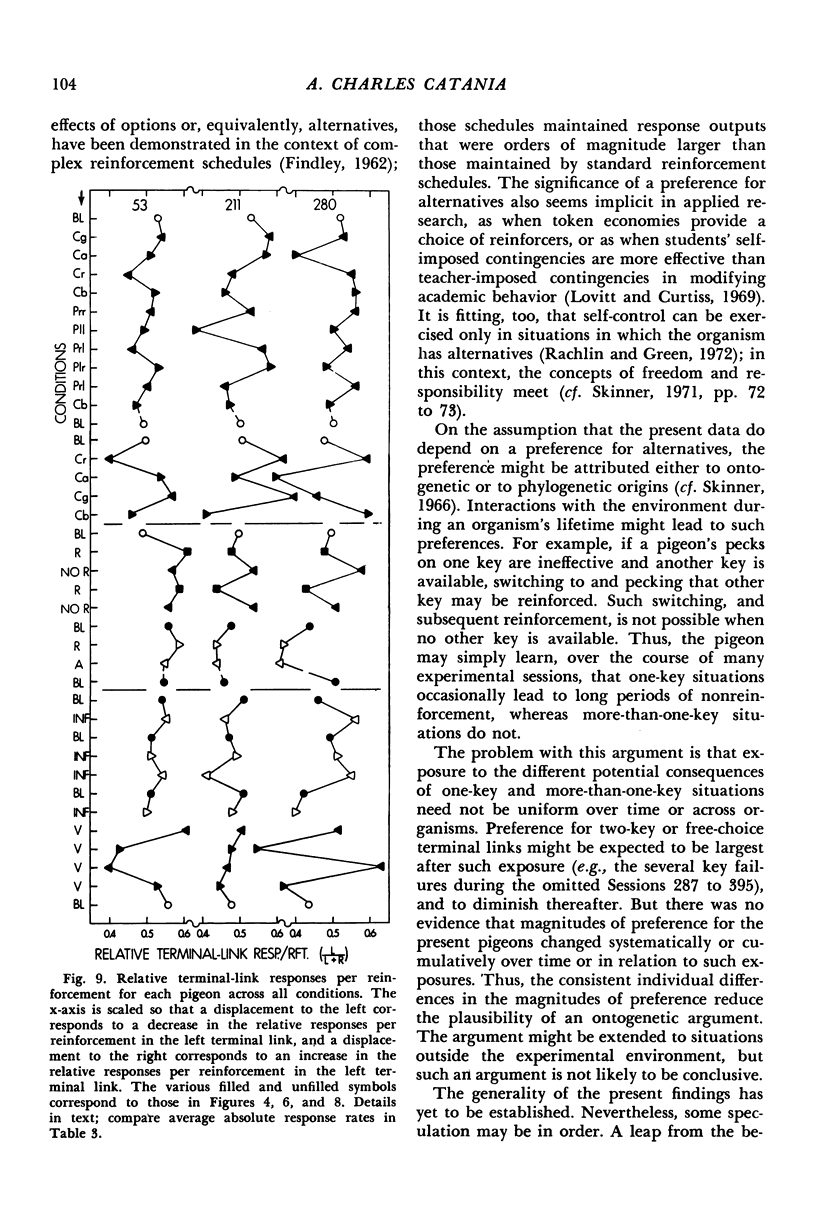
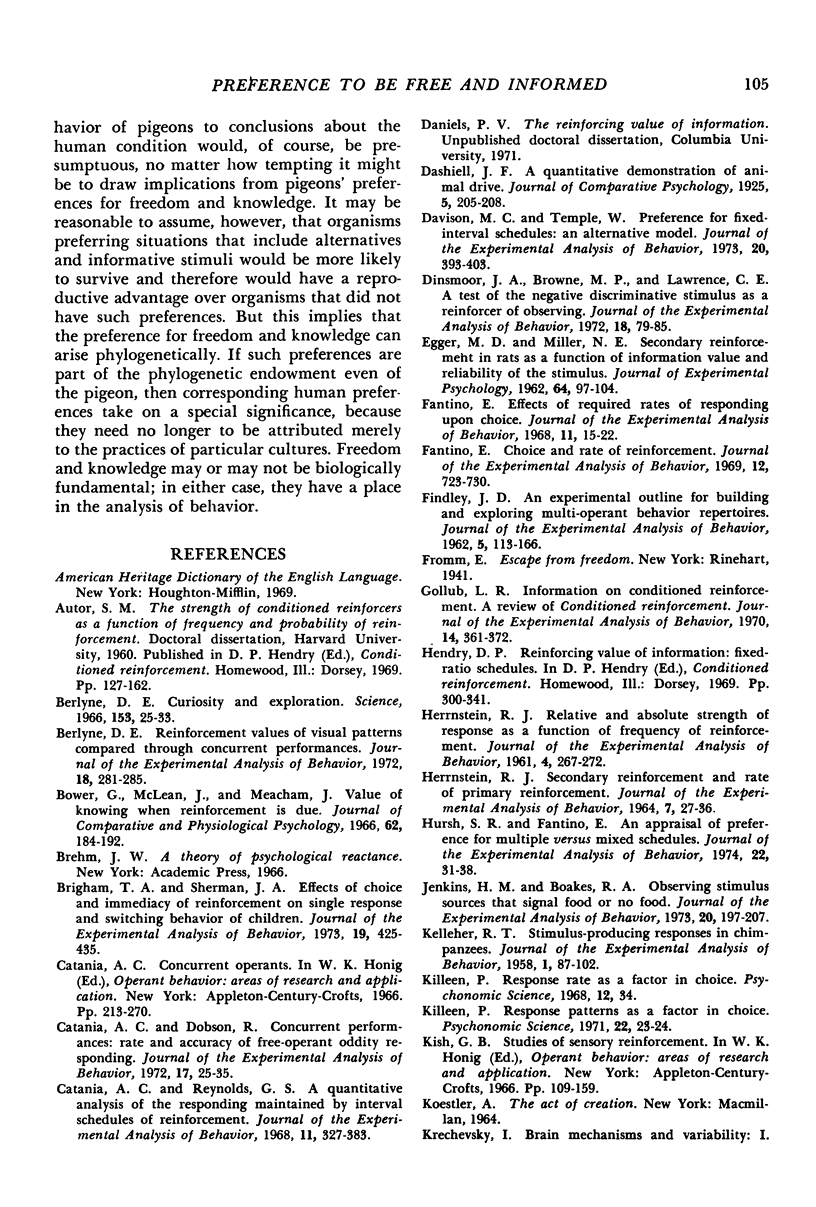
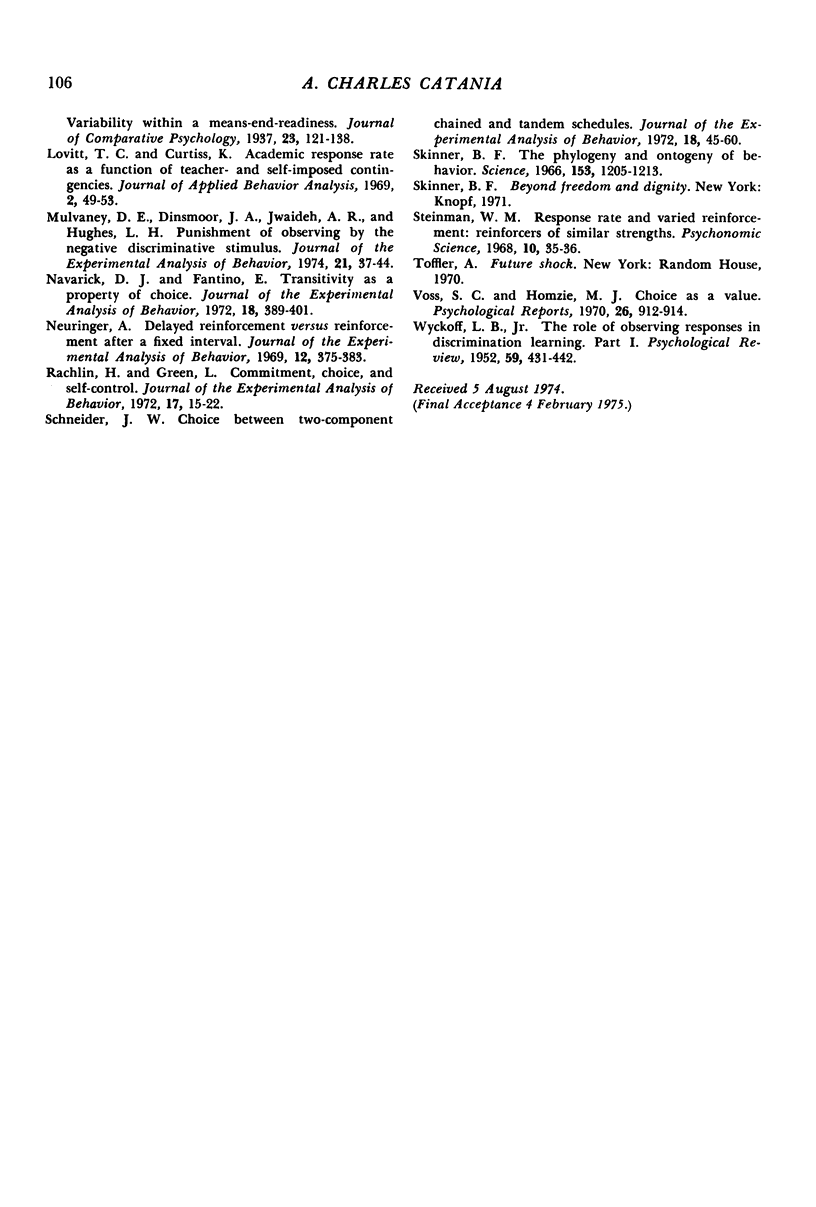
Selected References
These references are in PubMed. This may not be the complete list of references from this article.
- Berlyne D. E. Curiosity and exploration. Science. 1966 Jul 1;153(3731):25–33. doi: 10.1126/science.153.3731.25. [DOI] [PubMed] [Google Scholar]
- Berlyne D. E. Reinforcement values of visual patterns compared through concurrent performances. J Exp Anal Behav. 1972 Sep;18(2):281–285. doi: 10.1901/jeab.1972.18-281. [DOI] [PMC free article] [PubMed] [Google Scholar]
- Bower G., McLean J., Meacham J. Value of knowing when reinforcement is due. J Comp Physiol Psychol. 1966 Oct;62(2):184–192. doi: 10.1037/h0023682. [DOI] [PubMed] [Google Scholar]
- Brigham T. A., Sherman J. A. Effects of choice and immediacy of reinforcement on single response and switching behavior of children. J Exp Anal Behav. 1973 May;19(3):425–435. doi: 10.1901/jeab.1973.19-425. [DOI] [PMC free article] [PubMed] [Google Scholar]
- Catania A. C., Dobson R. Concurrent performances: rate and accuracy of free-operant oddity responding. J Exp Anal Behav. 1972 Jan;17(1):25–35. doi: 10.1901/jeab.1972.17-25. [DOI] [PMC free article] [PubMed] [Google Scholar]
- Catania A. C., Reynolds G. S. A quantitative analysis of the responding maintained by interval schedules of reinforcement. J Exp Anal Behav. 1968 May;11(3 Suppl):327–383. doi: 10.1901/jeab.1968.11-s327. [DOI] [PMC free article] [PubMed] [Google Scholar]
- Davison M. C., Temple W. Preference for fixed-interval schedules: an alternative model. J Exp Anal Behav. 1973 Nov;20(3):393–403. doi: 10.1901/jeab.1973.20-393. [DOI] [PMC free article] [PubMed] [Google Scholar]
- Dinsmoor J. A., Browne M. P., Lawrence C. E. A test of the negative discriminative stimulus as a reinforcer of observing. J Exp Anal Behav. 1972 Jul;18(1):79–85. doi: 10.1901/jeab.1972.18-79. [DOI] [PMC free article] [PubMed] [Google Scholar]
- EGGER M. D., MILLER N. E. Secondary reinforcement in rats as a function of information value and reliability of the stimulus. J Exp Psychol. 1962 Aug;64:97–104. doi: 10.1037/h0040364. [DOI] [PubMed] [Google Scholar]
- FINDLEY J. D. An experimental outline for building and exploring multi-operant behavior repertoires. J Exp Anal Behav. 1962 Jan;5(Suppl):113–166. doi: 10.1901/jeab.1962.5-s113. [DOI] [PMC free article] [PubMed] [Google Scholar]
- Fantino E. Choice and rate of reinforcement. J Exp Anal Behav. 1969 Sep;12(5):723–730. doi: 10.1901/jeab.1969.12-723. [DOI] [PMC free article] [PubMed] [Google Scholar]
- Fantino E. Effects of required rates of responding upon choice. J Exp Anal Behav. 1968 Jan;11(1):15–22. doi: 10.1901/jeab.1968.11-15. [DOI] [PMC free article] [PubMed] [Google Scholar]
- HERRNSTEIN R. J. Relative and absolute strength of response as a function of frequency of reinforcement. J Exp Anal Behav. 1961 Jul;4:267–272. doi: 10.1901/jeab.1961.4-267. [DOI] [PMC free article] [PubMed] [Google Scholar]
- HERRNSTEIN R. J. SECONDARY REINFORCEMENT AND RATE OF PRIMARY REINFORCEMENT. J Exp Anal Behav. 1964 Jan;7:27–36. doi: 10.1901/jeab.1964.7-27. [DOI] [PMC free article] [PubMed] [Google Scholar]
- Hursh S. R., Fantino E. An appraisal of preference for multiple versus mixed schedules. J Exp Anal Behav. 1974 Jul;22(1):31–38. doi: 10.1901/jeab.1974.22-31. [DOI] [PMC free article] [PubMed] [Google Scholar]
- Jenkins H. M., Boakes R. A. Observing stimulus sources that signal food or no food. J Exp Anal Behav. 1973 Sep;20(2):197–207. doi: 10.1901/jeab.1973.20-197. [DOI] [PMC free article] [PubMed] [Google Scholar]
- KELLEHER R. T. Stimulus-producing responses in chimpanzees. J Exp Anal Behav. 1958 Jan;1:87–102. doi: 10.1901/jeab.1958.1-87. [DOI] [PMC free article] [PubMed] [Google Scholar]
- Lovitt T. C., Curtiss K. A. Academic response rate as a function of teacher- and self-imposed contingencies. J Appl Behav Anal. 1969 Spring;2(1):49–53. doi: 10.1901/jaba.1969.2-49. [DOI] [PMC free article] [PubMed] [Google Scholar]
- Mulvaney D. E., Dinsmoor J. A., Jwaideh A. R., Hughes L. H. Punishment of observing by the negative discriminative stimulus. J Exp Anal Behav. 1974 Jan;21(1):37–44. doi: 10.1901/jeab.1974.21-37. [DOI] [PMC free article] [PubMed] [Google Scholar]
- Navarick D. J., Fantino E. Transitivity as a property of choice. J Exp Anal Behav. 1972 Nov;18(3):389–401. doi: 10.1901/jeab.1972.18-389. [DOI] [PMC free article] [PubMed] [Google Scholar]
- Neuringer A. J. Delayed reinforcement versus reinforcement after a fixed interval. J Exp Anal Behav. 1969 May;12(3):375–383. doi: 10.1901/jeab.1969.12-375. [DOI] [PMC free article] [PubMed] [Google Scholar]
- doi: 10.1901/jeab.1970.14-361. [DOI] [PMC free article] [Google Scholar]
- Rachlin H., Green L. Commitment, choice and self-control. J Exp Anal Behav. 1972 Jan;17(1):15–22. doi: 10.1901/jeab.1972.17-15. [DOI] [PMC free article] [PubMed] [Google Scholar]
- Schneider J. W. Choice between two-component chained and tandem schedules. J Exp Anal Behav. 1972 Jul;18(1):45–60. doi: 10.1901/jeab.1972.18-45. [DOI] [PMC free article] [PubMed] [Google Scholar]
- Skinner B. F. The phylogeny and ontogeny of behavior. Contingencies of reinforcement throw light on contingencies of survival in the evolution of behavior. Science. 1966 Sep 9;153(3741):1205–1213. doi: 10.1126/science.153.3741.1205. [DOI] [PubMed] [Google Scholar]
- WYCKOFF L. B., Jr The role of observing responses in discrimination learning. Psychol Rev. 1952 Nov;59(6):431–442. doi: 10.1037/h0053932. [DOI] [PubMed] [Google Scholar]


